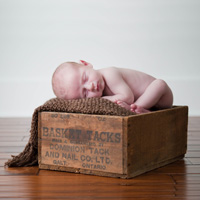Sleep Stall Tactics

Water breaks, bathroom visits, one more story and pleas for kisses. Our children’s appeals to extend bedtime can seem endless. According to a study by the National Sleep Foundation stalling bedtime is the number one sleep complaint amongst parents. “My four-year-old Lydia’s bedtime bargaining power can sometimes last until I’m ready to call it a night,” says Mississauga-based mom Esther Czyrski. While all parents can admit that requests for hugs and kisses may start out cute, most of the time we just want bed time to go smoothly so we can relax with a few well-deserved quiet time before we retire.
Here's how to counter your child's bedtime stall tactics:
Keep Bedtime Consistent
“Having a trouble-free bedtime is about consistency,” says Dr. Jodi Mindell, author of Sleeping Through the Night. If you expect bedtime to go smoothly you need to follow the same plan at the same time every night. Mindell suggests creating a bedtime routine chart with pictures that show your child everything that will happen leading up to bedtime. Include activities such as bath, changing into pajamas, tooth brushing and stories along with the times they will happen. “Be very concrete,” says Mindell. “If you read two stories, put down two stories.” Don’t leave flexibility for your child to beg for more.
Mindell says to add all the usual diversions to the list. By incorporating water, hugs and bathroom breaks into your bedtime routine you eliminate any room for discussion after tuck in time.
Create a Bedtime Pass
If your child is still full of excuses, Mindell suggests a bedtime pass. Make a get out of bed free card that your child can use once a night. He will learn to save this card in case he really needs to go to the washroom or actually is thirsty. Tell your child he will be rewarded if he wakes up the next morning and hasn’t used his bedtime pass. “Avoid monetary prizes,” says Mindell. Instead let your child pick what the family will have for dessert that night or say he can play a special game with mom or dad.
Rewards can also be used to speed up bedtime stall tactics. Try something like: “If you’re ready for bed by 7:30 you’ll get an extra story.” Mindell finds that children respond better to earning something than by taking something away.
Jumping in with Mom & Dad
What if your child goes to bed fine and then jumps in with you as soon as the hall light goes out?
“Bed sharing is fine as long as everyone in the family is okay with it and the whole family is getting a good night’s sleep,” says Aimee Coulombe, a Dalhousie University-based member of the Better Nights, Better Days Sleep Team. If not, something has to change.
Children come into their parents’ bed when they experience a normal night waking. You need to train your child to roll over and go back to sleep instead of walking into your room.
“The best place to start is to look at how your child falls asleep,” says Coulombe. If she wakes up and the circumstances are different than when she fell asleep your child may come to you for comfort. The most obvious place to start is teaching your child to fall asleep on her own. If you lie down with your child until she falls asleep – stop!
Sleep environment changes could be something as simple as going to sleep with a light on in the hall and waking up to darkness, or going to sleep with background noise and waking up to silence. In these cases something as simple as a nightlight or white noise machine can help comfort your child back to sleep on her own.
If your child continues to sneak into your bed at nighttime, pick a week where you can be consistent and work on sleep training. “You need to send a clear message to your child,” says Dr. Jodi Mindell, author of Sleeping Through the Night. You can’t send your child back to bed some nights and let them stay on others as it will confuse them. “Return your child to their bed every time,” says Mindell. If your child is able to sneak in without you hearing that may mean putting a bell on your door so you can hear when he enters. “As long as you’re consistent your child will soon get the message.”





